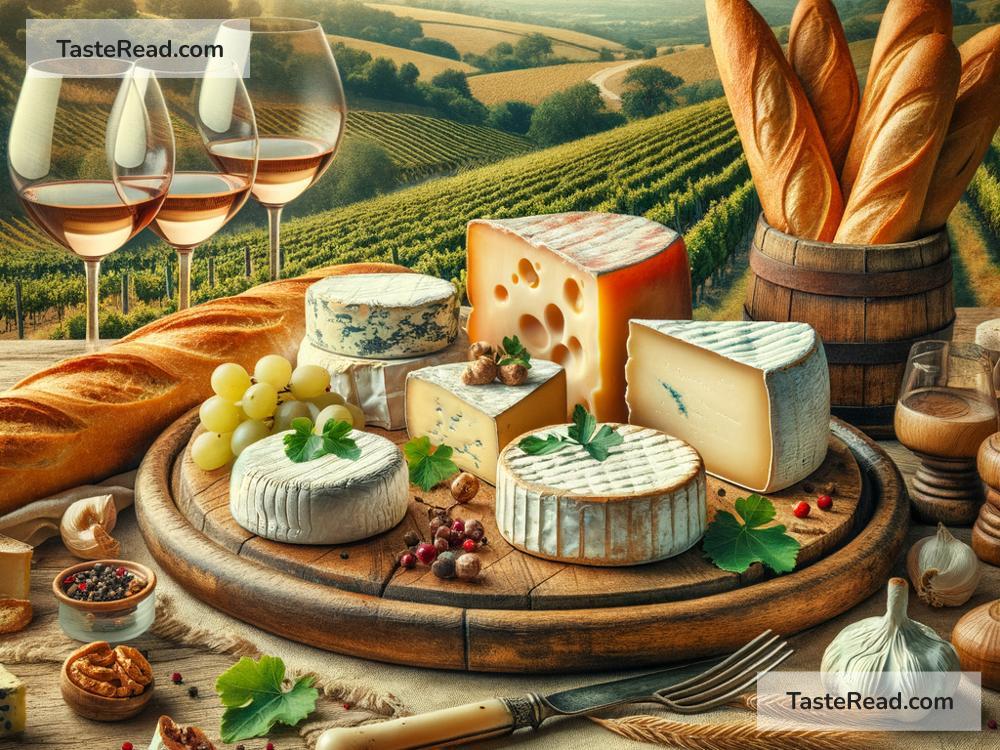The History of French Cheese Making: A Journey of Flavor and Craftsmanship
French cheese is a world-famous symbol of tradition, culture, and mouthwatering taste. With more than 1,000 different varieties, France has earned the nickname “The Land of Cheese.” But how did French cheese become so iconic? Let’s look at the history of French cheese making, a story filled with innovation, culture, and a deep passion for food.
Early Beginnings: Cheese Before France Was France
Cheese has been around for thousands of years. The earliest cheese in Europe likely came from nomadic tribes. These communities discovered that milk carried in animal stomachs curdled into a solid substance due to the enzymes in the stomach lining. This was the humble beginning of cheese-making.
Cheese arrived in what is now France during the Roman Empire. The Romans were excellent cheese makers, and they introduced their techniques to the Gauls, the people living in the region. At that time, cheese was mainly made at home or by small communities, and it tasted very different from the French cheeses we know today. Yet, this was the foundation for France’s rich cheese-making tradition.
The Middle Ages: Monks and Cheese Innovation
The Middle Ages were a turning point for French cheese. Monasteries played a huge role in developing many of the cheeses we love today. Monks, known for their detailed approach to farming and food preparation, perfected cheese recipes and experimented with ripening techniques.
Cheese like Munster, Comté, and Roquefort began to take shape during this time. Monks often aged the cheese in caves, creating unique flavors. For example, Roquefort became famous because it was aged in the natural caves of Roquefort-sur-Soulzon, where the blue mold gave it its distinct look and tangy taste.
Cheese was much more than food for the monks; it was also a source of income. They sold their cheeses to local communities, spreading their creations across the region.
The Renaissance: Cheese Gains Prestige
During the Renaissance (14th–17th centuries), French cheese began to gain prestige as a luxurious food for the upper class. Kings, queens, and nobles enjoyed cheese at their banquets. Queen Catherine de Medici, who married King Henry II, brought her love of Italian cheese to France, influencing its development further.
Cheese also began to appear in French literature, art, and culture. Writers and poets praised French cheese in their works, and this helped elevate its status.
By this time, cheese-making had moved beyond monasteries and farms. Skilled artisans started to refine cheese recipes, leading to the creation of regional specialties. People began associating specific cheeses with certain areas of France, such as Brie from Île-de-France and Camembert from Normandy.
The 18th and 19th Centuries: Cheese as a National Symbol
As France grew into a unified nation, cheese became one of its cultural icons. Napoleon Bonaparte reportedly loved Époisses, a soft and creamy cheese. He even declared that cheese was a symbol of French pride.
The Industrial Revolution in the 19th century changed cheese production forever. Traditional, small-scale cheese-making began to combine with new technologies. Factories allowed for larger-scale production, but this period also sparked the idea of protecting artisanal cheeses.
In 1855, Roquefort was one of the first French cheeses to receive legal protection. Producers fought to protect its name and traditional methods of aging it in caves. This idea of protecting cheese origins later evolved into the “Appellation d’Origine Contrôlée” (AOC) system, which legally defines and preserves the authenticity of French food products, including cheese.
French Cheese Today: A Global Treasure
Today, cheese is an essential part of French life. Whether it’s served with bread and wine at a family meal or showcased on the menu of a Michelin-starred restaurant, cheese is treasured by people of all classes. Visiting a local fromagerie (cheese shop) in France often feels like stepping into a museum filled with edible art.
French cheesemakers continue to use traditional methods while also exploring new flavors and techniques. Many cheeses are still aged in caves, wrapped in leaves, or washed in brine just as they were centuries ago. Yet modern innovations, like vacuum-packing cheese for export, have made French cheese available worldwide.
French cheese also celebrates the diversity of the country’s landscapes and weather. From the rocky coasts of Normandy to the rolling hills of Provence, the unique soils, climates, and livestock of each region contribute to the variety of cheeses. Goat cheese (chèvre) thrives in the sunny south, while rich cow’s milk cheeses like Brie flourish in northern climates.
Why French Cheese Matters
French cheese isn’t just food—it’s culture, history, and tradition all wrapped up in a wedge or wheel. Cheese teaches us about the land, the people, and the artistry behind every bite.
France’s cheese-making history is proof that passion for food can bring people together. It’s a tradition that continues to evolve while staying true to its roots. Whether you’re enjoying a creamy Camembert or tangy Roquefort, you’re tasting a little piece of history that has been perfected over centuries.
So, the next time you enjoy French cheese, remember the monks, farmers, artisans, and innovators who made it possible. Their story is as rich and complex as the flavors you’re savoring. Bon appétit!


